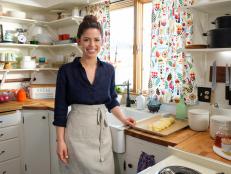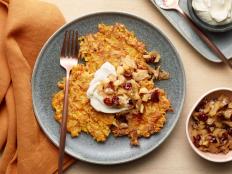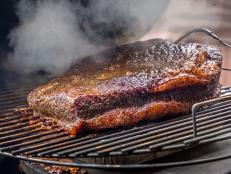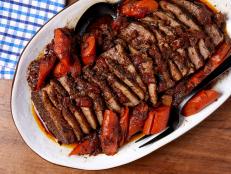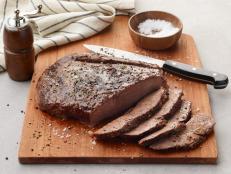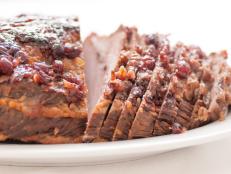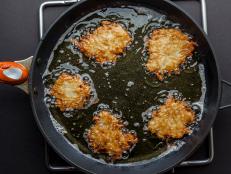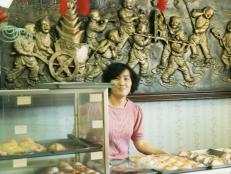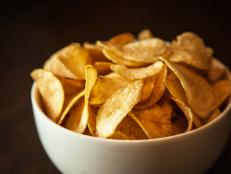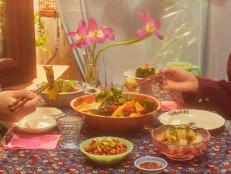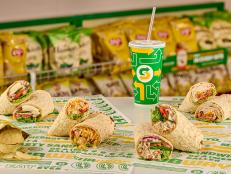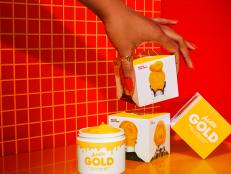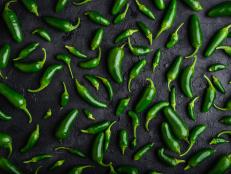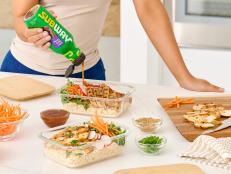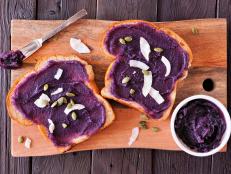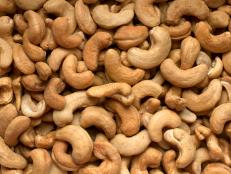Hanukkah: The Food and Traditions
Why do we eat latkes, gelt and jelly doughnuts for eight days and nights? Here, everything you need to know about traditional Hanukkah food.
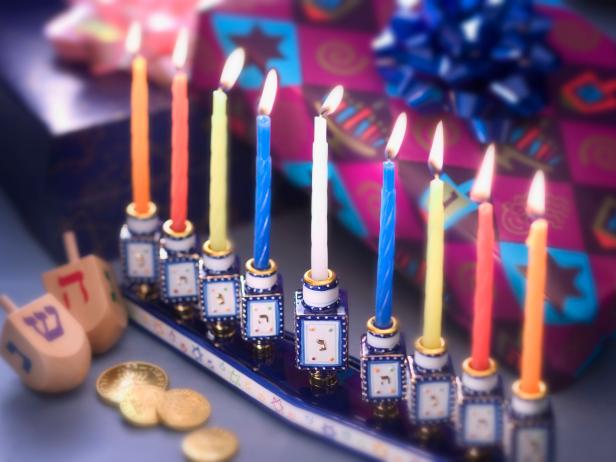
Rick Gayle Studio/Getty Images
By Fraya Berg and Rupa Bhattacharya for Food Network Kitchen
Fraya and Rupa are contributing writers at Food Network.
Hanukkah, a festival commemorating deliverance from religious oppression and the rededication of the Holy Temple in Jerusalem, is a beloved Jewish holiday. It’s celebrated on the 25th day of the Jewish month Kislev. The dates change from year to year, falling in November or December, because the Hebrew calendar is based on the lunar cycle. Read on for more info on the history, traditions and food enjoyed on Hanukkah (potato pancakes, jelly donuts and all manner of fried food, we’re looking at you).
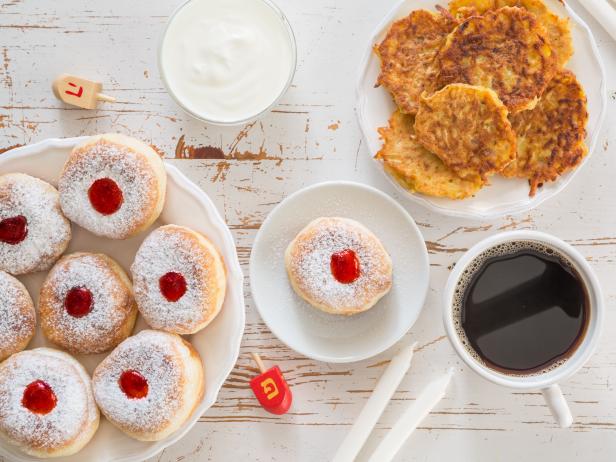
a_namenko/Getty Images
What Is Hanukkah? And Why Is It Celebrated?
As is the case with other Jewish holidays, the history is complex and has several different interpretations. However, here’s the legend in brief. In the second century B.C.E., a Greco-Syrian tyrant outlawed Jewish religious practices. A small band of dedicated rebels known as the Maccabees overturned the monarch. When they reclaimed the holy temple in Jerusalem, the eternal light was still lit, but there was only enough sanctified oil to keep the flame going for one day. However, by a miracle of God, one day’s worth of oil kept the lamp burning for eight days, the time it took to get more oil. In honor of the miracle of oil, Hanukkah is celebrated for eight days and nights and foods are fried in oil. For a deeper dive, head over to our article, The History of Hanukkah.
Hanukkah Traditions
Although Hanukkah is not as religiously significant as Rosh Hashanah or Passover, there are a number of special traditions celebrated over the course of the festival’s eight days and nights.
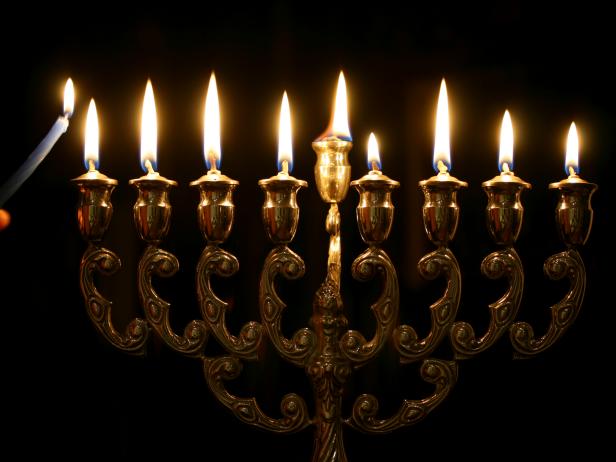
tovfla/Getty Images
1. Lighting the Menorah
The menorah, which holds nine candles and is often shaped like a candelabra, symbolizes the eight days and nights the oil burned in the holy temple. There are eight candles for eight nights, and a ninth candle called the shamash that’s used for lighting. On the first night of Hanukkah, families light the leftmost candle on the menorah. On the second night, families light two candles on the left; on the third night, families light three – and so on and so forth. Everywhere you go in the world, there are 44 Hanukkah per box, the total number of candles you’ll light over the course of eight days. Households often place the menorah in the window of a room so it’s visible to the street and fills the entire room with its radiance.
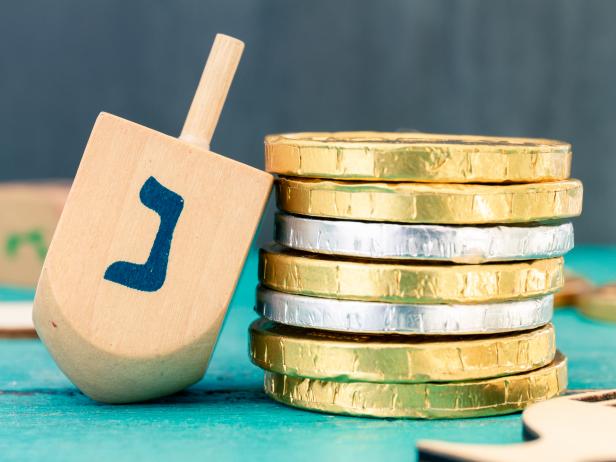
vladi79/Getty Images
2. Spinning the Dreidel
The game dreidel is enjoyed by children and adults alike during Hanukkah. Players spin a top called a dreidel, which has Hebrew letters on each side, and guess which side will land up. As legend has it, students of the Torah in the second century B.C.E. continued their religious practices – oppressors notwithstanding – under the guise of playing dreidel games. Players use foil covered chocolate coins called gelt as currency. The word gelt derives from the German word for money, Geld, because in eastern Europe Hanukkah used to be the time that families would tip workers.
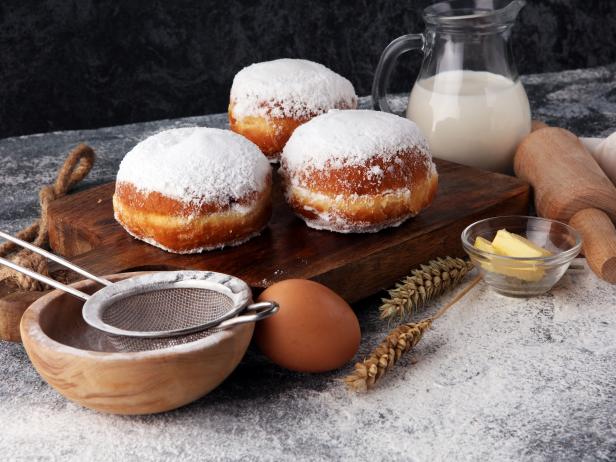
/Getty Images
3. Frying Food
Deep- or shallow-fried dishes like sufganiyot (jelly doughnuts) and potato latkes abound, serving as a delicious reminder of the miracle of the oil at the heart of the Hanukkah story.
Traditional latkes are made with ground or grated potatoes, egg, onion and the least amount of flour or matzo meal necessary to hold the mixture together. But you don’t need to limit yourself to potato: any ingredients that can be chopped or grated and mixed in with the potatoes is welcome – sweet potato, finely sliced leeks, chives, scallions, shredded carrot, kale or chard are all possibilities, for example. Feeel free to get creative. For more info on making creative latkes, head over to our story How to Make Latkes with Celery and Herbs, which has photos to guide you and info on how to squeeze out as much water as possible so you achieve crispy latkes.
In the section that follow, there’s more info on the traditional foods enjoyed on Hanukkah.
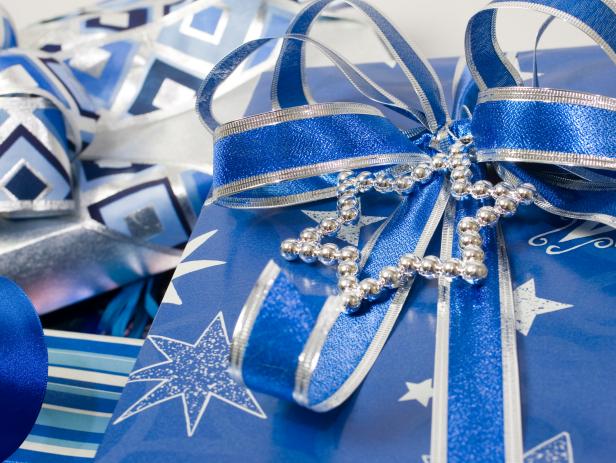
MarkCoffeyPhoto/Getty Images
4. Giving Gifts
Although gelt was the original gift exchanged on Hanukkah, when Jews immigrated to the U.S. and began assimilating, the holiday changed with them. Perhaps due to the holiday’s proximity to Christmas, some families began exchanging Hanukkah gifts. Some exchange gifts once, others give gifts on every night of Hanukkah, while still others simply exchange cash.
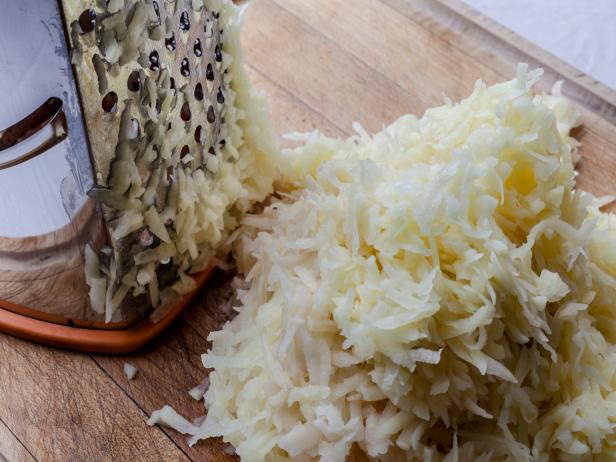
ksushachmeister/Getty Images
Traditional Hanukkah Food
While every family's tradition is different, brisket is a go-to standby, often rounded out with salads and enjoyed while children spin the dreidel for gelt.
As we’ve already discussed, latkes are a major part of the holiday, and they’re traditionally served with several toppings including sour cream and applesauce. Many like to get creative with their toppings, adding fresh dill sprigs, furls of lox or even caviar. Some families take their frying to another level and serve schnitzels with a wedge of lemon alongside the latkes and skip the brisket.
Sufganiyot is a classic dessert since it’s fried. Other Jewish desserts like babka, rugelach and apple or honey cake might be enjoyed too. And in today’s day and age, there are many innovative recipes for Hanukkah sugar cookies and homemade gelt.
It’s also important to note that region of origin plays an important role in what makes up the traditional Jewish table. Whether food is smothered in onions and sprinkled with paprika, or flavored with lemon, garlic and mint, it'll most likely reflect the host's ancestry. A little more on each style, below.
Ashkenazic Jewish Cooking (Central and Eastern European)
Sauteed onions, sweet and sour sauces, chicken noodle soup and braised beef brisket are typical of this region. Simple seasoning and minimal use of herbs and spices create dishes that are sometimes delicate, but never bland. Potatoes appear in many forms: cooked with meat, fried as pancakes and baked in kugels (casseroles). Challah is the bread of choice, and luscious strudels, creamy cheesecakes, honey cakes, babka and blintzes satisfy the sweet tooth.
Sephardic Jewish Cooking (Mediterranean)
Sephardic cooking, in the term's current use, broadly encompasses the worlds of Judeo-Arab (Middle Eastern), Judeo-Spanish (Iberian) and North African Jewish cooking. These diverse styles share much in common. Cumin, coriander and cinnamon are the seasoning stars. Rice and chickpeas are staples. Dishes are pungent and aromatic, heady with garlic, herbs, lemon and pomegranate. Lamb is the meat of choice, frequently stewed in tomato-based sauces. Artichokes, eggplants, spinach, okra, olives and peppers accompany the meal, often in the form of olive oil-drenched salads. In households with origins in the eastern Mediterranean, pita bread and tahini-based spreads are common, and bulgur and lentils are additional pantry staples. Desserts are based on pistachio and pine nuts, honey and filo dough.
Hanukkah Recipes

This recipe for latkes is truly classic: the ingredients are exactly what most Jewish grandmothers use and pass down through the generations. If your family grinds the potatoes and onions, go for it.
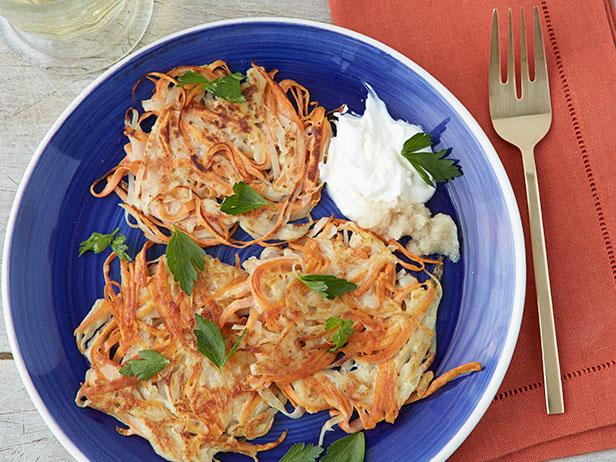
The easiest of the latke variations and the most familiar, sweet potato latkes are colorful and always a hit.
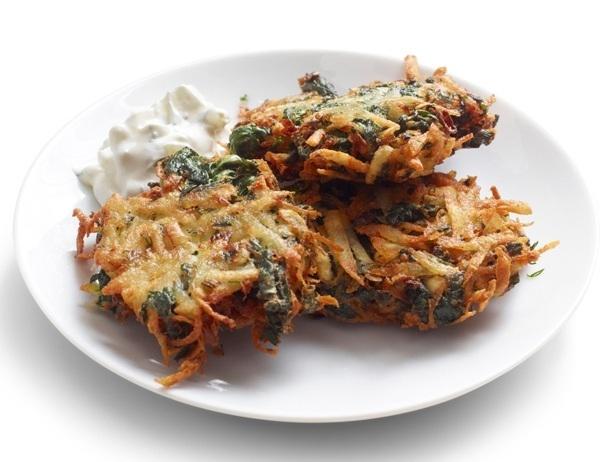
Con Poulos
Spanakopita is a traditional baked Greek pastry. Phyllo dough is filled with spinach, feta cheese and dill. Here, the ingredients are combined with grated potato and fried latke-style. This recipe is a great addition to add to your families’ favorites.

Some prefer sour cream, others are team apple sauce. One thing's for certain: everyone will want to smother their latkes with this sweet-tart puree that's perfumed with subtle nutmeg and cinnamon.
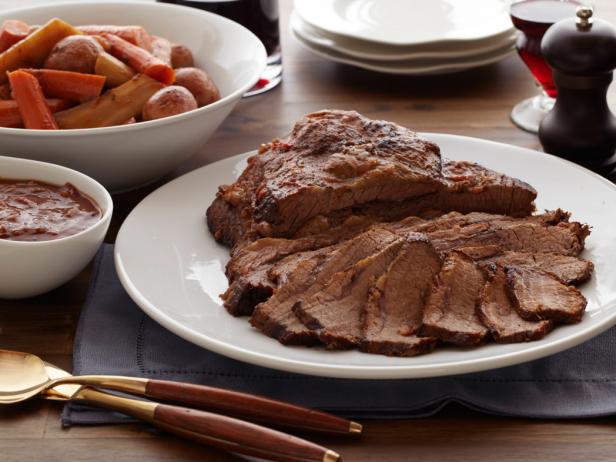
Here, a simple, stunning main for your holiday dinner - replete with rich tomato flavor and luscious root vegetables.
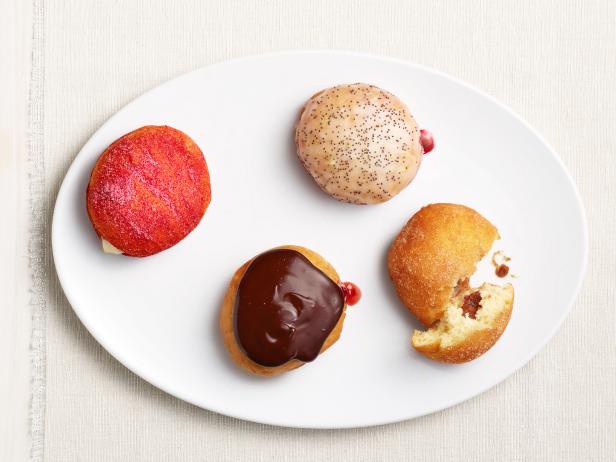
Levi Brown
These doughnuts are the real deal: sufganiyot in all their glory made with a buttery yeast dough that is fried and filled. Try one or all the filling options.
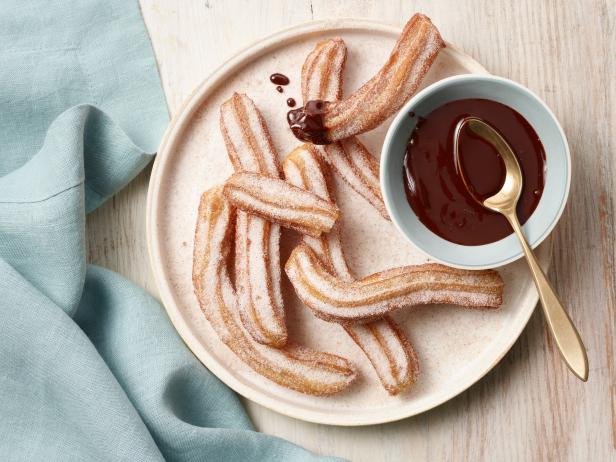
Renee Comet
Hanukkah can’t be all jelly doughnuts all the time, and churros are one of our favorite fried desserts, so we’re making them on one of the fifth night of Hanukkah.
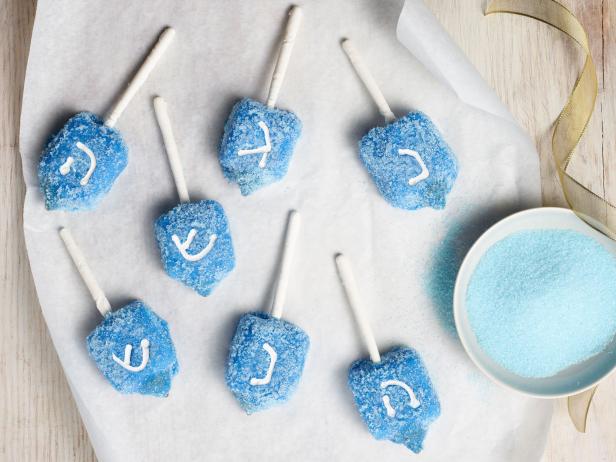
Renee Comet
Though we wouldn't describe this treat as traditional, we'd certainly describe it as fun and festive and totally kid-friendly - get the whole family involved in making them.
Related Links:
Our Favorite Hanukkah Recipes
























